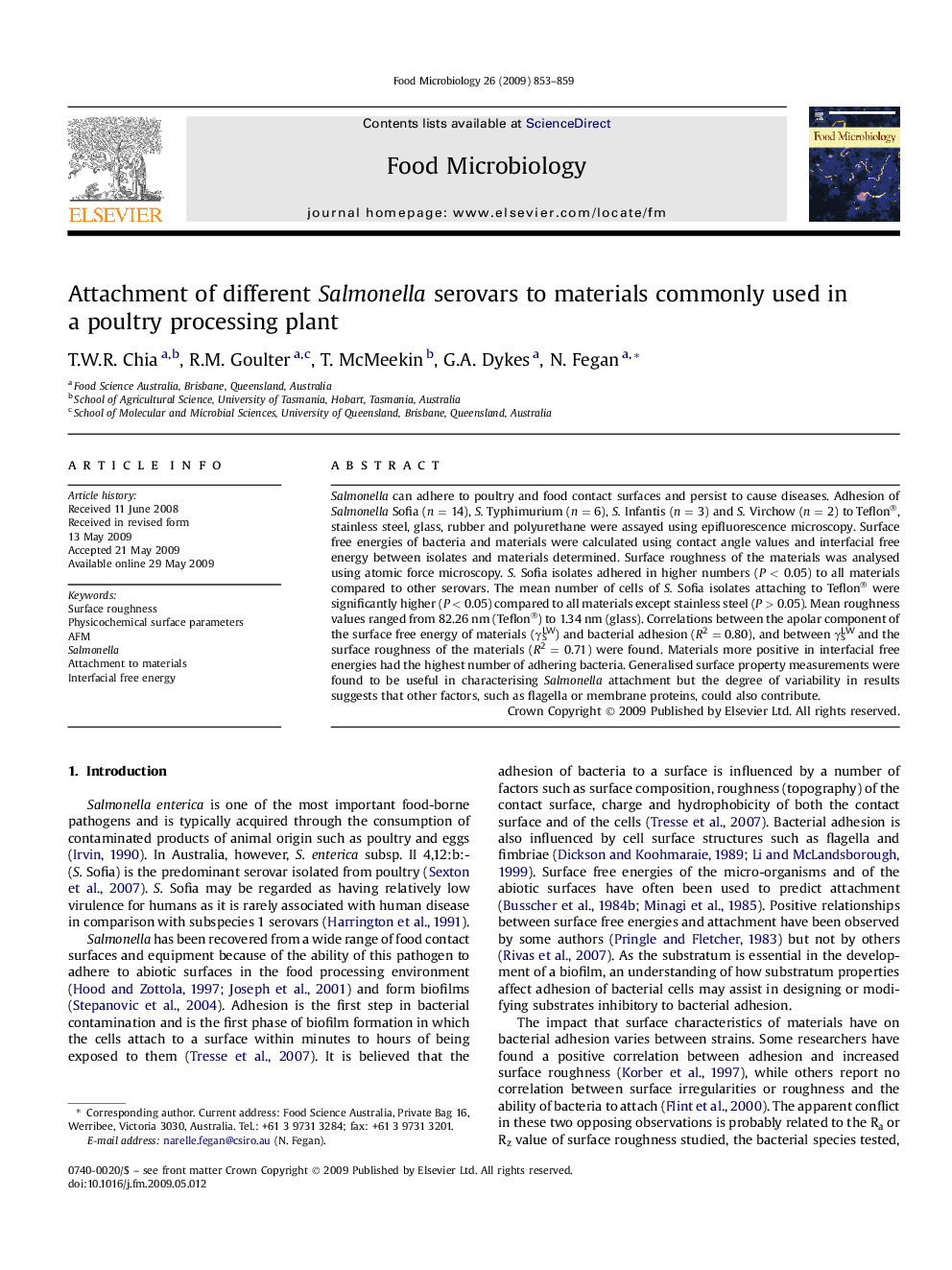| Article ID | Journal | Published Year | Pages | File Type |
|---|---|---|---|---|
| 4363496 | Food Microbiology | 2009 | 7 Pages |
Salmonella can adhere to poultry and food contact surfaces and persist to cause diseases. Adhesion of Salmonella Sofia (n = 14), S. Typhimurium (n = 6), S. Infantis (n = 3) and S. Virchow (n = 2) to Teflon®, stainless steel, glass, rubber and polyurethane were assayed using epifluorescence microscopy. Surface free energies of bacteria and materials were calculated using contact angle values and interfacial free energy between isolates and materials determined. Surface roughness of the materials was analysed using atomic force microscopy. S. Sofia isolates adhered in higher numbers (P < 0.05) to all materials compared to other serovars. The mean number of cells of S. Sofia isolates attaching to Teflon® were significantly higher (P < 0.05) compared to all materials except stainless steel (P > 0.05). Mean roughness values ranged from 82.26 nm (Teflon®) to 1.34 nm (glass). Correlations between the apolar component of the surface free energy of materials (γSLW) and bacterial adhesion (R2 = 0.80), and between γSLW and the surface roughness of the materials (R2 = 0.71) were found. Materials more positive in interfacial free energies had the highest number of adhering bacteria. Generalised surface property measurements were found to be useful in characterising Salmonella attachment but the degree of variability in results suggests that other factors, such as flagella or membrane proteins, could also contribute.
